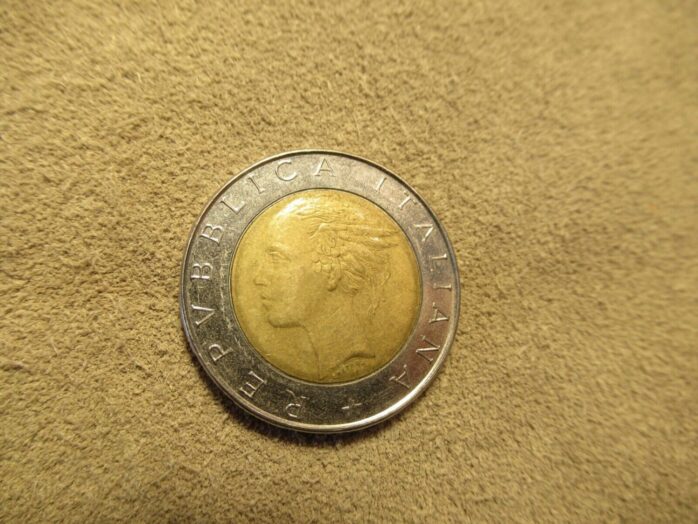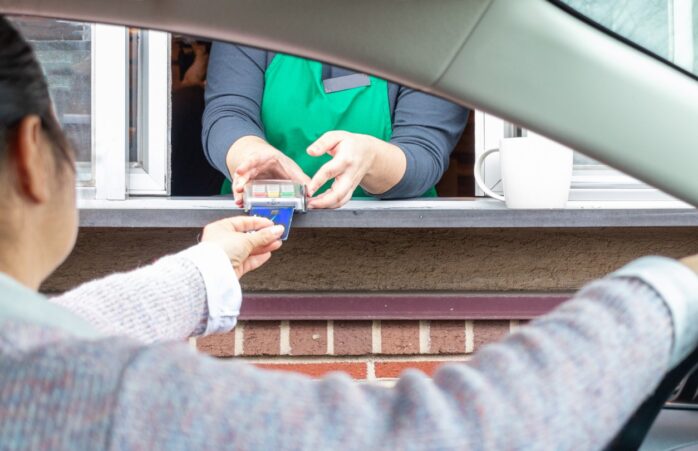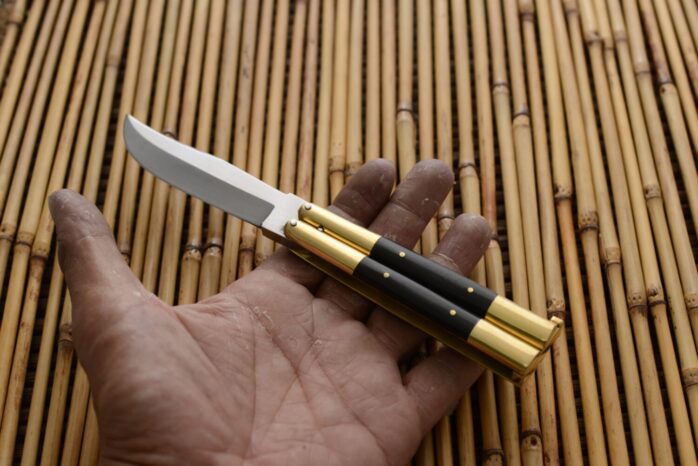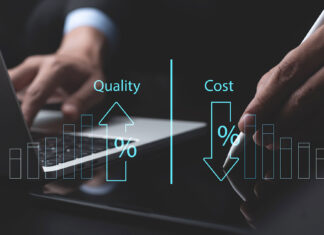The 20th century was quite tumultuous for Italy’s currency as it was for the country as a whole. Numerous wars, economic crises, changes in the value of precious metals, and other factors all meant that most Italian currencies had to change multiple times. The silver lining of all this, however, is that it makes many Italian Lira coins quite interesting for collectors, numismatists, and other enthusiasts to look into. And the Repvbblica Italiana L.500 coin is an excellent example of that. So, let’s explore the Repvbblica Italiana L.500 coin value, types, variations, details, and errors below.
Repvbblica Italiana L.500 Coin History
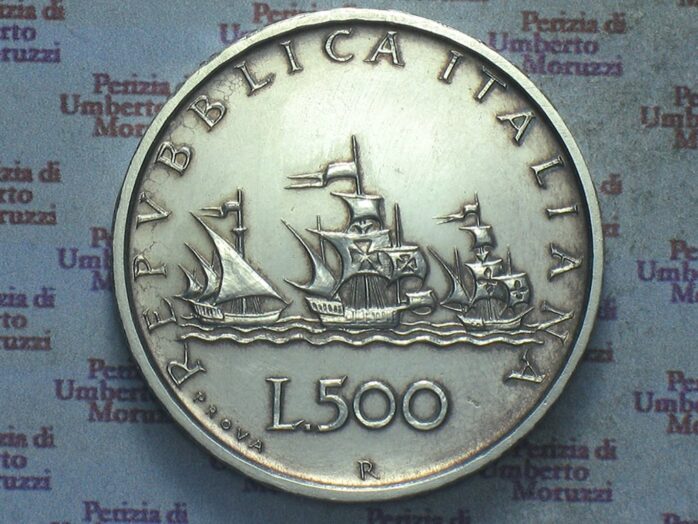
The silver 500 Lira coin was first introduced in Italy in 1958. The obverse side of this coin featured the ships of Christopher Columbus sailing through the Atlantic Ocean and it was designed by Guido Veroi. The obverse also included the coin’s denomination of L.500, an R mint mark right below it (which stands for Istituto Poligrafico e Zecca dello Stato in Rome, Italy), and the words “Repvbblica Italiana” across the edge. “Repvbblica” isn’t misspelled, of course, as that’s just the Latin spelling of Republic.
The reverse side of the silver L.500 coin was designed by Pietro Giampaoli and it featured the left-facing bust of a Renaissance woman surrounded by a wreath of 19 shields. Unfortunately, the rise in the value of silver in the 60s meant that the coin had to be discontinued in 1967, at least as far as wide circulation was concerned. Smaller quantities were still minted for collectors after that, however, the coin had to be replaced for wide circulation with 500 lira paper bills.
This type of currency then underwent yet another change in 1982 when a 500 lira coin was once against introduced, replacing the paper bills. This coin wasn’t made of silver, however, but it wasn’t made of silver. Instead, it was made out of a bronzital center plug with an acmonital ring. What’s more, this was the first bi-metallic to be minted in Italy – this means not that it was made out of a metal alloy but that it featured two distinct pieces made out of different metals – one centerpiece and one ring. Today, this is the standard for many coin currencies across Europe and the rest of the world.
The design of this 1982 coin was different from that of its 1958 predecessor too. Instead of Columbus’ ships, the obverse side here featured a left-facing head of a woman with wings in her hair and surrounded by the words Repvbblica Italiana on the outside ring of the coin. The reverse side, on the other hand, included an image of the Piazza del Quirinale in Rome with two branches on the side, the year and mint mark at the bottom, the L.500 denomination further below, as well as a few dots on top.
These dogs are another historic “first” for the 1982 Repvbblica Italiana L.500 coin as this was the first coin to also feature its value written in the braille language. That version of the coin stopped being minted for wide circulation in 1995 and only proof coins were made until 2001 when those stopped being made too. The reason the coin stopped being made this time, however, didn’t have anything to do with the cost of its materials, inflation, or anything else. Instead, Italy had simply switched from that currency and to the Euro together with most other EU countries in 1999. So, all lira coins and banknotes were discontinued around that time.
Repvbblica Italiana L.500 Coin Variants And Specifications
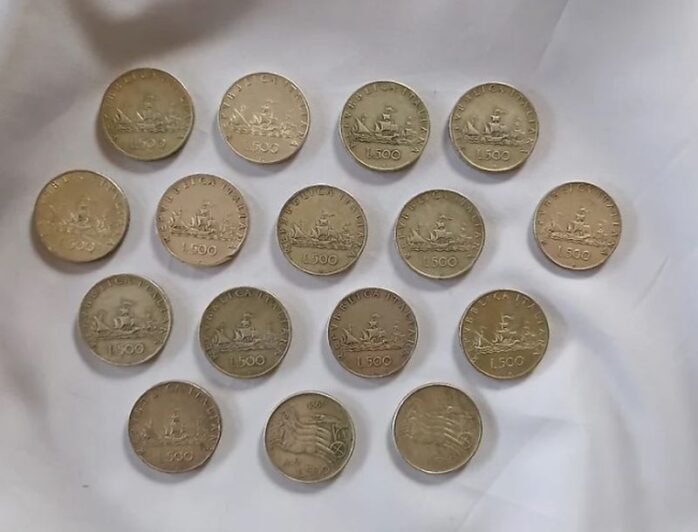
When talking about Repvbblica Italiana Lira coins, we’re talking about both the 1958-1967 Silver 500 Lira coin and the 1982-2001 bi-metallic 500 Lira coin. So, let’s explore those separately:
1958-1967 Silver 500 Lira coin
- Composition: Silver
- Fineness: 0.8350
- Weight: 11 grams
- ASW: 0.2953oz
- Melt Value: $7.20
- Diameter: 29.3 mm
- Obverse Designer: Columbus’ ships by Guido Veroi
- Reverse Designer: Left-facing woman’s bust with a wreath of shields by Pietro Giampaoli
- Edge Description: Dates in raised lettering
1982-2001 bi-metallic 500 Lira coin
- Composition: Bi-Metallic bronzital center plug with an acmonital ring
- Weight: 6.8 grams
- Diameter: 25.8 mm
- Obverse: Left-facing woman’s head
- Reverse: Piazza del Quirinale in Rome
- Engraver: Laura Cretara
- Edge Description: Segmented reeding
As you can see, the two coins really are quite different – their designs, composition, weight, melt value, years of minting, and more. The denomination of 500 lire is the only thing they have in common, so it’s important to always be mindful about which L.500 coin people are talking about when discussing these coins. Also, keep in mind that both coins have counterfeit lookalikes made, especially the older silver variant.
Of course, we should also point out that both of these coins also had Proof versions which were minted in much smaller quantities every year. These proofs had a much higher detail and quality and were never meant for wide circulation. As such, they have a higher value overall compared to their regular counterparts. Although, as often happens, the highest-quality regular coins tend to be valued higher than proof coins as they are even rarer than them. But, let’s go a bit deeper into coin grading below to see exactly how coins are evaluated.
Repvbblica Italiana L.500 Coin Grading
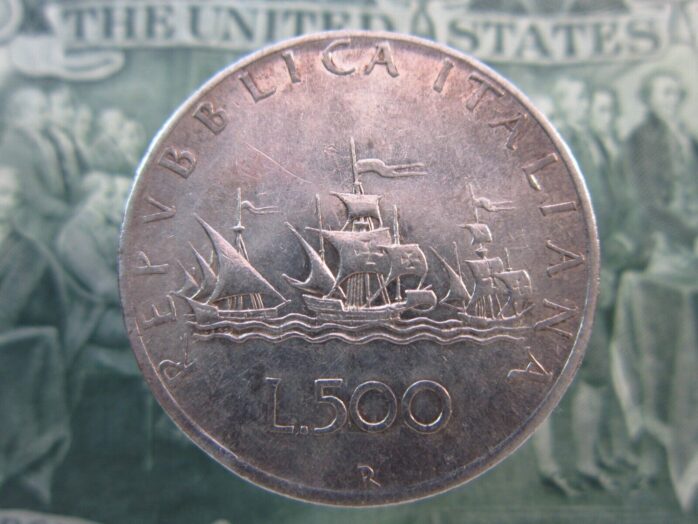
Grading either of the Repvbblica Italiana L.500 coins is done the same way as any other coin you’d find on Coin Value Checker. First, you’d want to confirm the exact type, year, mintage, and authenticity of the coin you’re looking at. Next, to grade its quality, you’d want to assess its visual qualities, as in – how well it’s been preserved and whether there is any significant amount of wear and tear accumulated over the years.
To do that, experts typically use 1-to-70 grading scales such as the Sheldon coin grading scale. In such scales, anything below a great of 60 is usually seen as too worn out to be worth anything above its face value or melt value. From there, the value of the coin starts to slowly rise with each grade, and the higher-valued coins will usually have grades of 65 and above.
For example, the old silver L.500 coins will typically cost anywhere between several dozen and a couple of hundred dollars as long as they have a grade of 63 or above. In fact, because of their age and historic significance, they can cost several dozen dollars even if their grade is in the 50s which isn’t all that common.
The bi-metallic L.500 coins don’t have that high of a value even if they are of pristine visual quality, however, both because they are quite new and because they are not made of silver.
Once you’ve graded a particular coin, the third thing you’d want to look for is the presence of any unique manufacturing errors such as a double die error or an off-center error as these can further make the individual coin you’re holding rarer and thus – more valuable.
Another factor to consider regarding the L.500 coin and other Italian currencies is that their face value is generally quite low in US dollars or in Euro. In the case of the L.500 coin, its face value is roughly equal to €0.2582. So, this is relatively close to a US or Euro quarter coin even though it’s a 500 lira coin.
In Conclusion
Like many others of the coins you’ll find on Coin Value Checker, the Repvbblica Italiana L.500 coin the value of each individual piece can vary greatly depending on its quality, age, and the presence of any unique markings. The 500 lira coin is unique in quite a few respects such as the introduction of braille lettering, its bi-metallic composition, and the relatively short lifespans of both types of these coins.
That historic significance, coupled with the gorgeous designs of both L.500 coins and their relatively affordable value, makes both of them great collector’s items for novice numismatists that are looking to add something interesting to their new collections.
Repvbblica Italiana L.500 Coin FAQ

Why is Repvbblica Italana spelled that way on the L.500 coin?
Italy’s lira coins used to be engraved in Latin rather than in modern Italian, hence why “The Republic of Italy” is spelled “Repvbbluc Italiana”.
Why aren’t old Silver L.500 coins more valuable today?
Silver 500 lira coins from the 1958-1967 period tend to sell for somewhere between several dozen and a couple of hundred dollars today if they are preserved in high enough quality. This may not seem like much compared to other coins but we should remember that 500 lira is roughly equivalent to €0.2582 or a US quarter today. And several dozen to a hundred dollars for a quarter is not a low value.

